
Where We Be
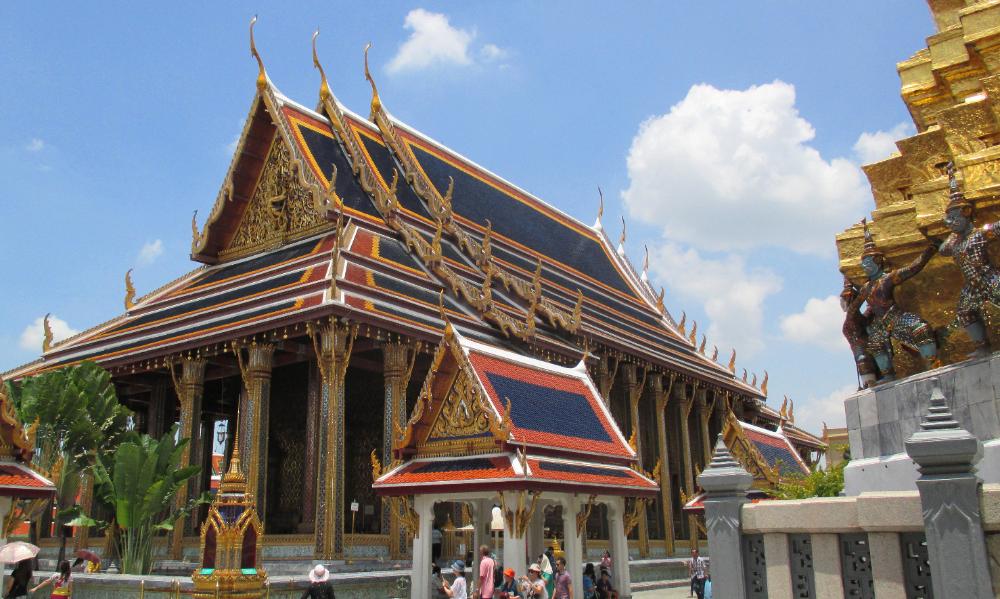
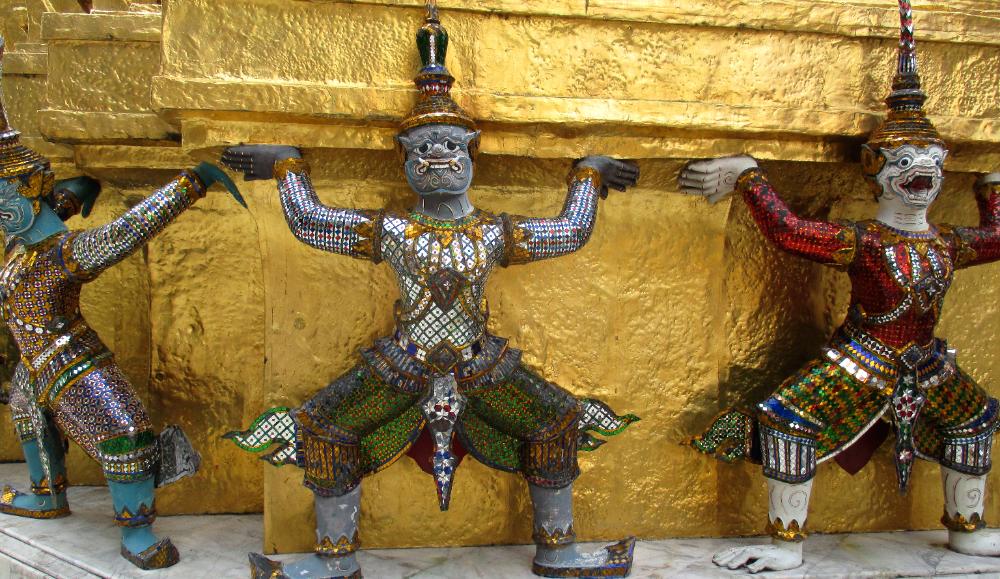
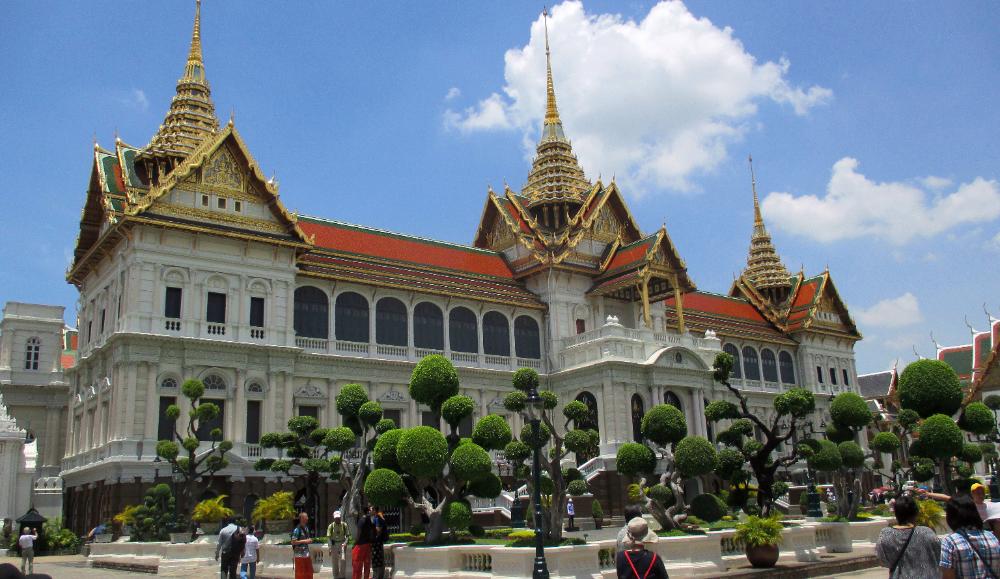
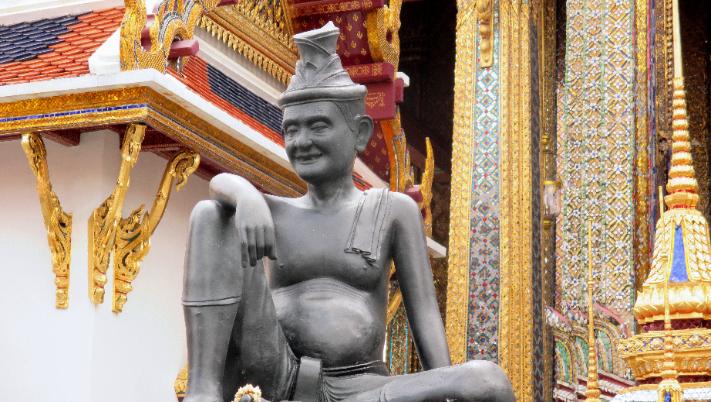
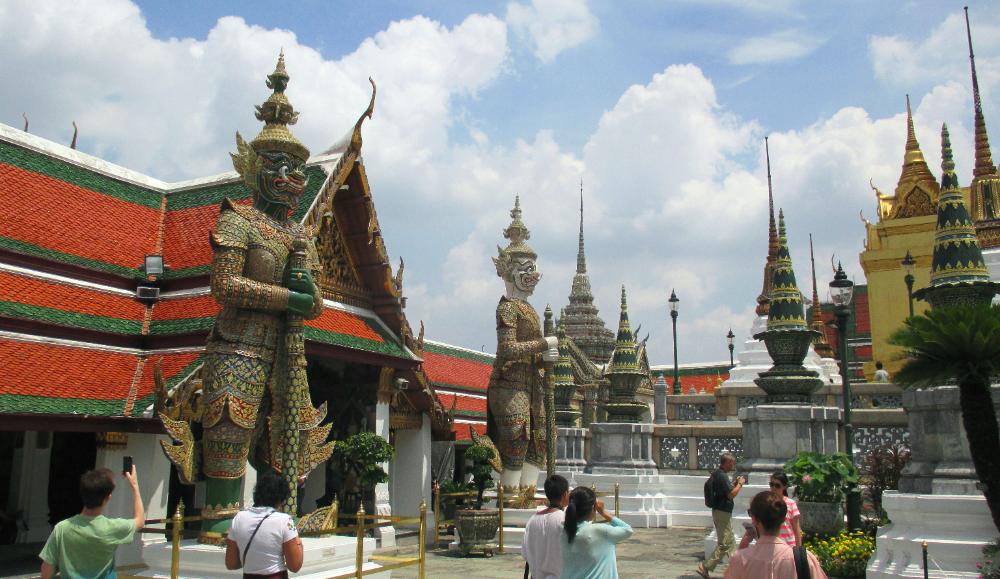
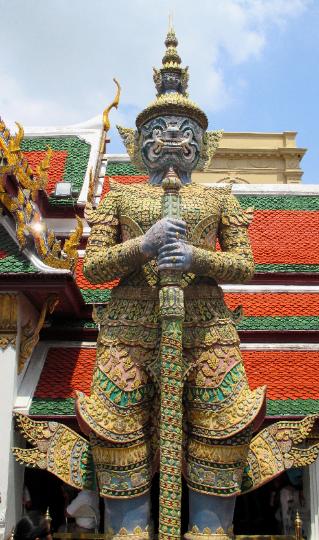
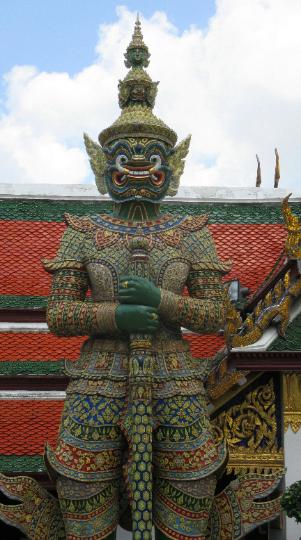
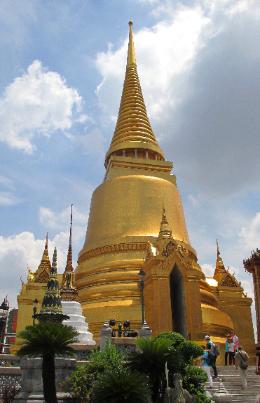
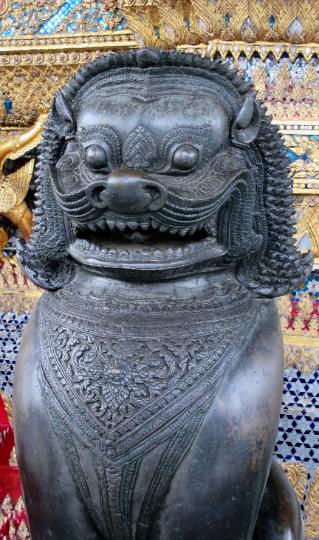
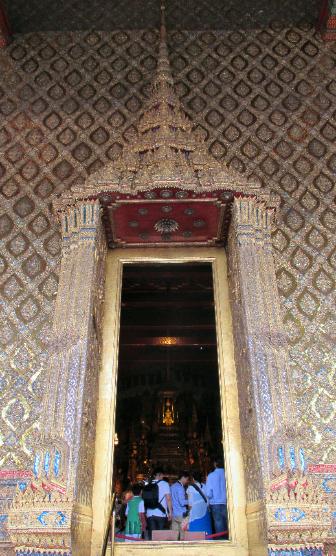
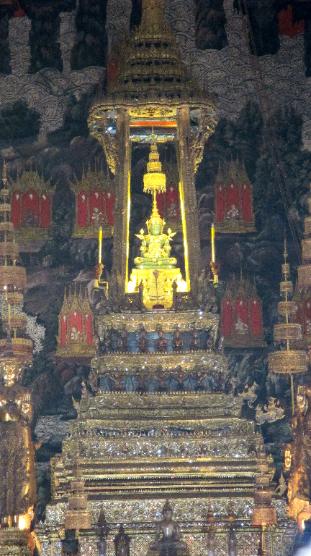
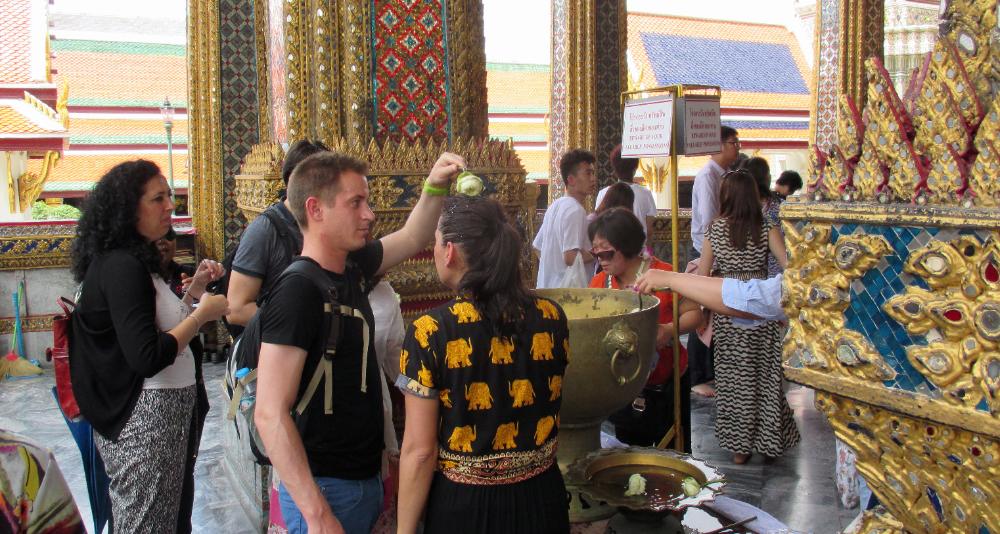
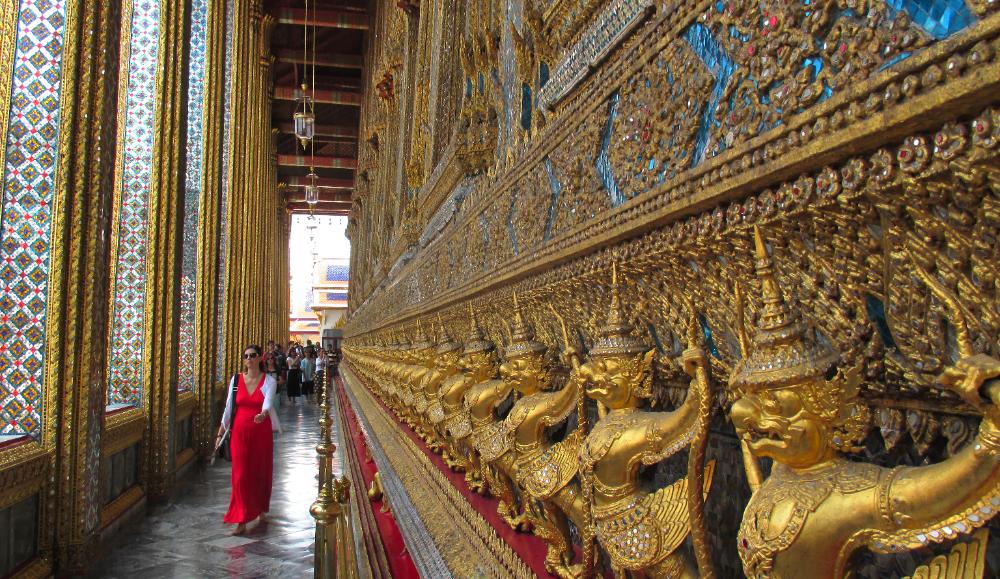
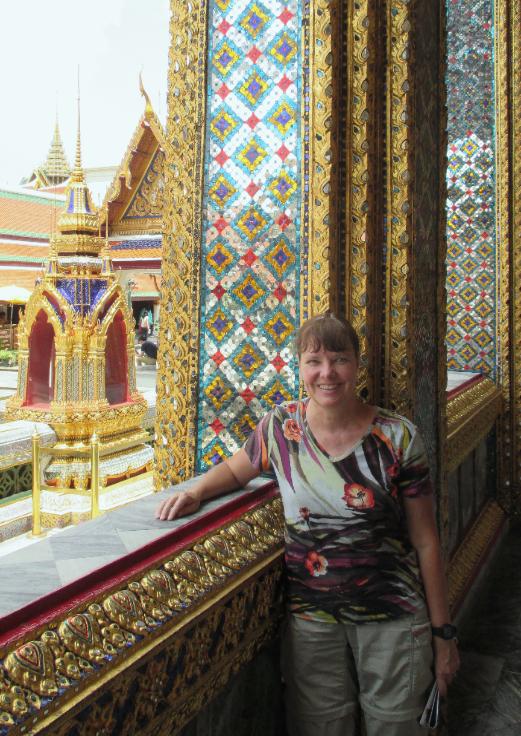
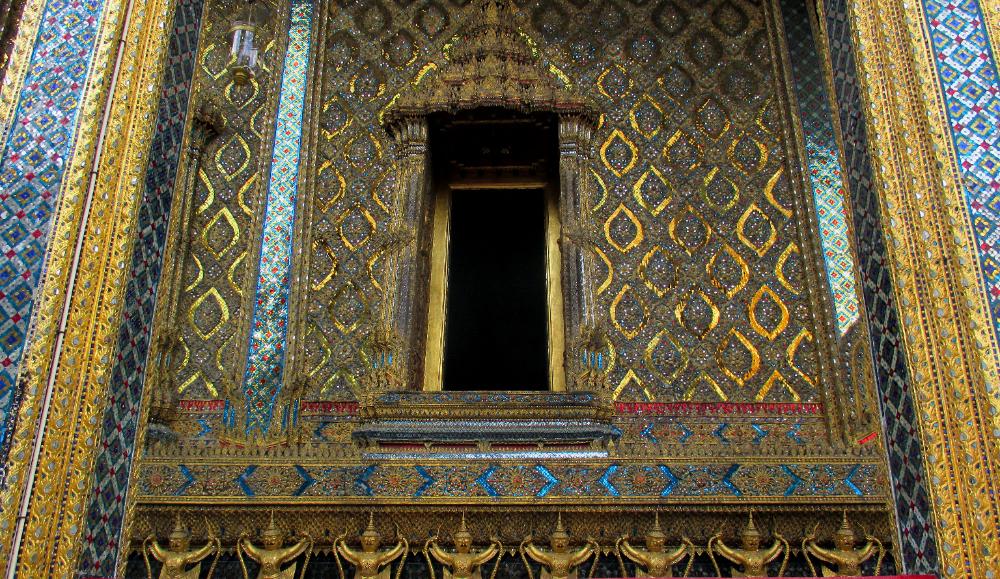
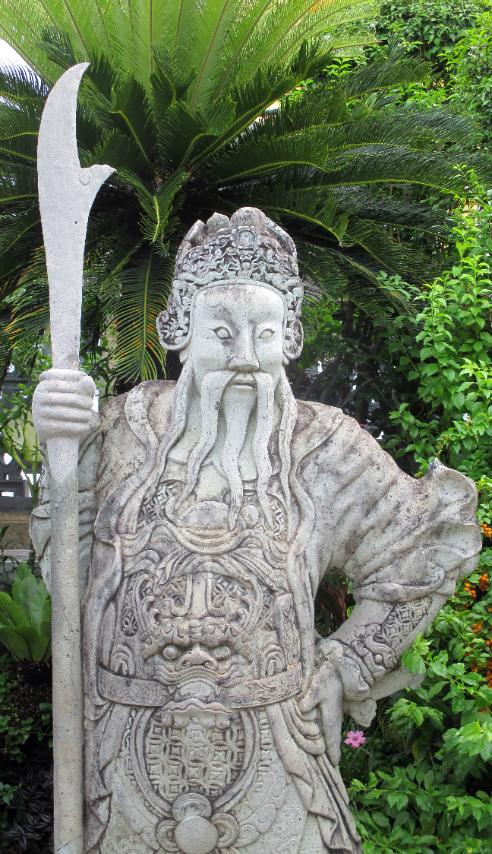
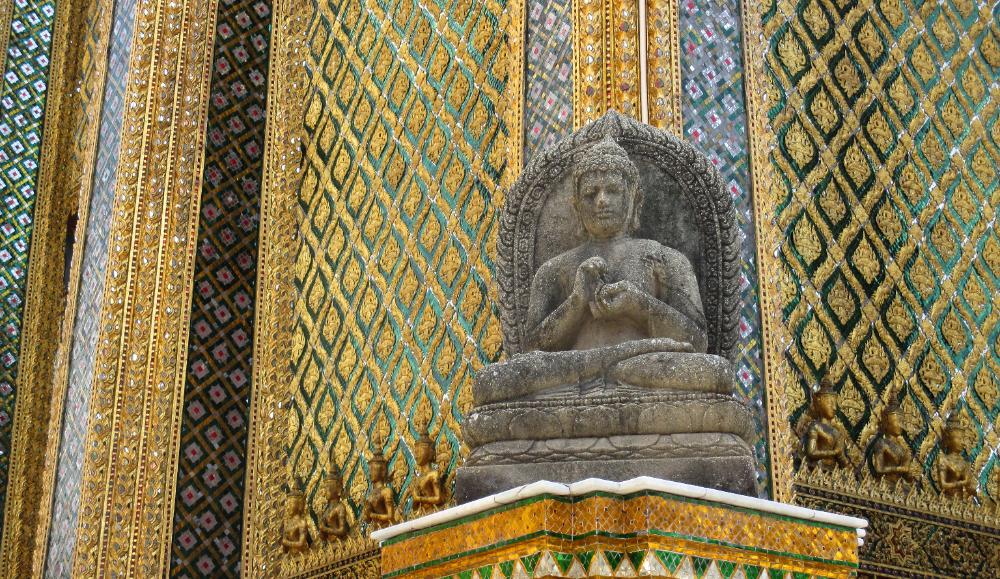
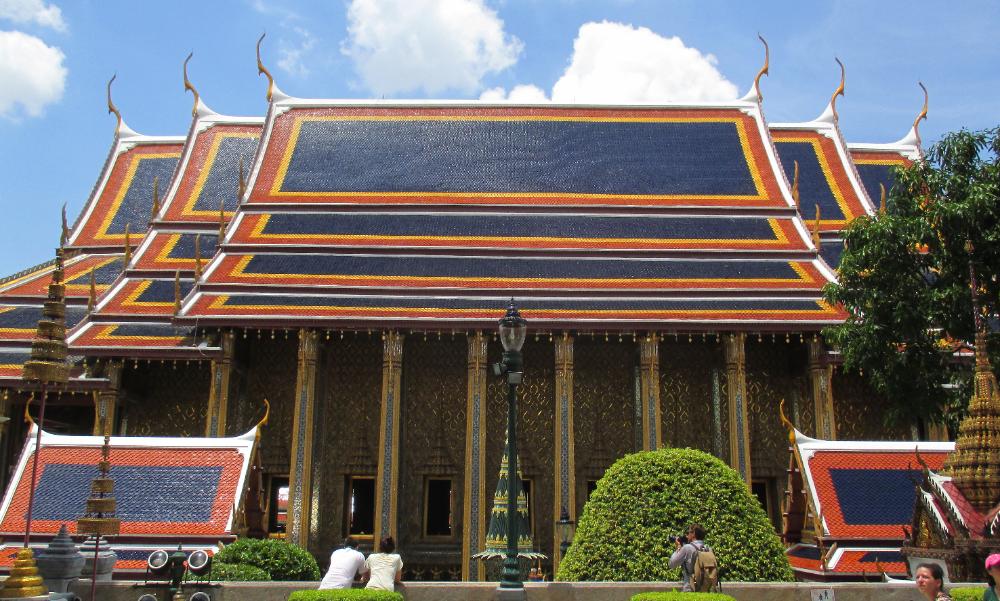
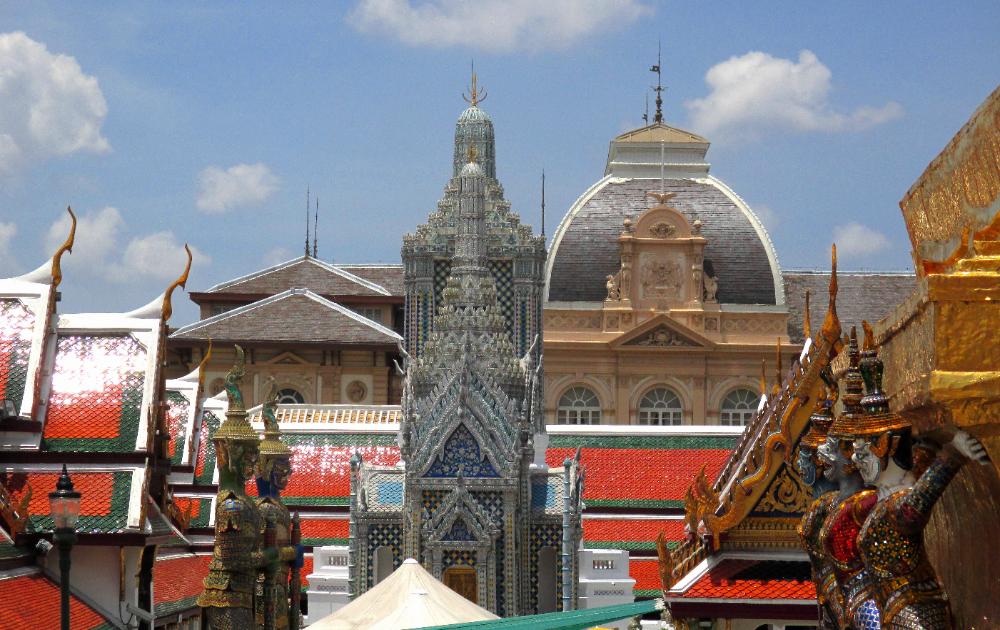
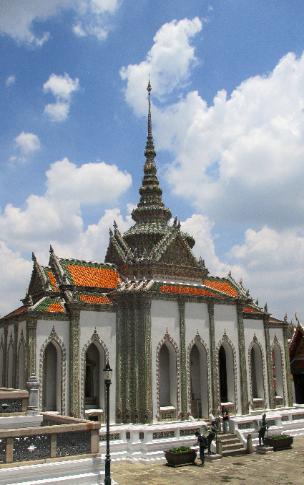
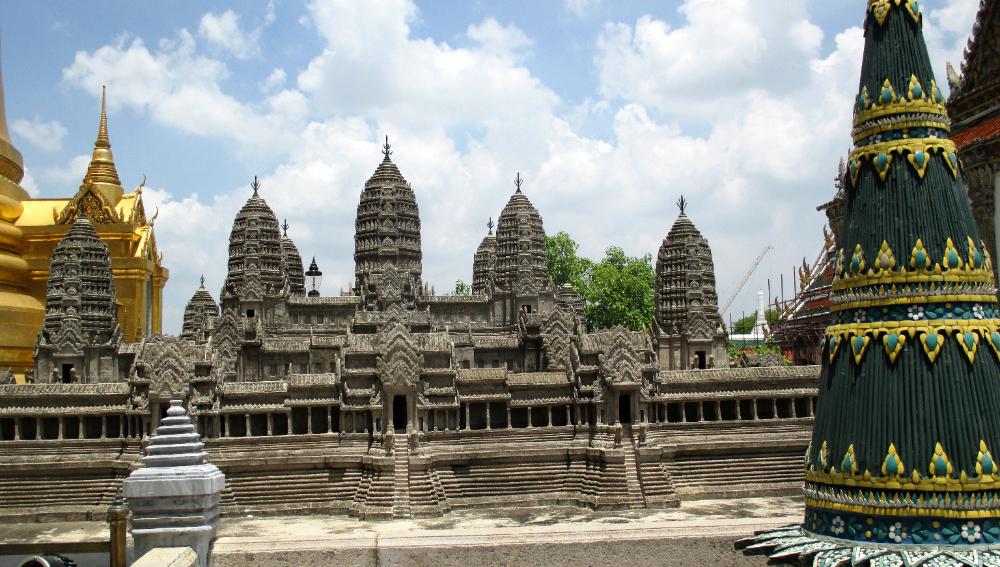
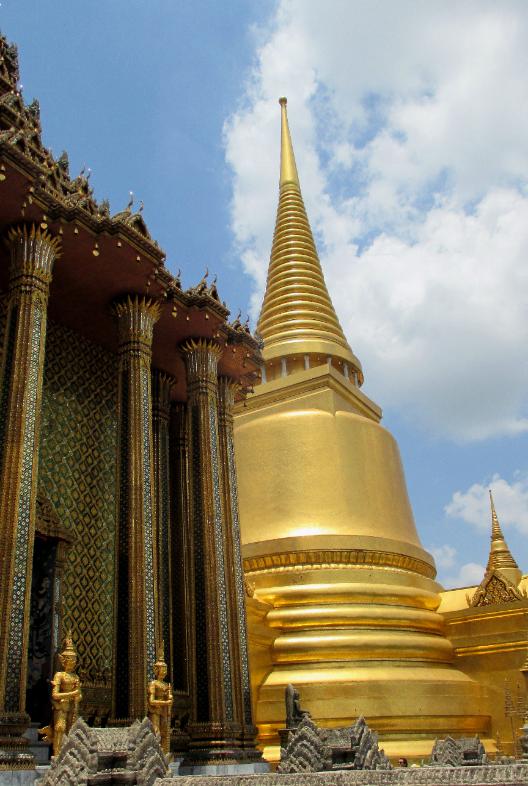
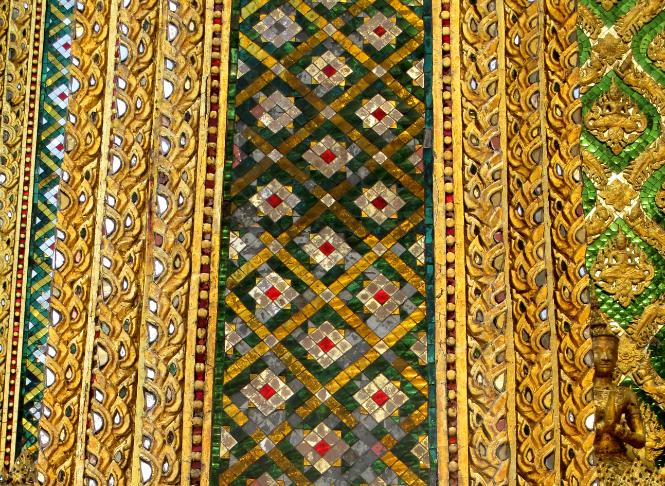
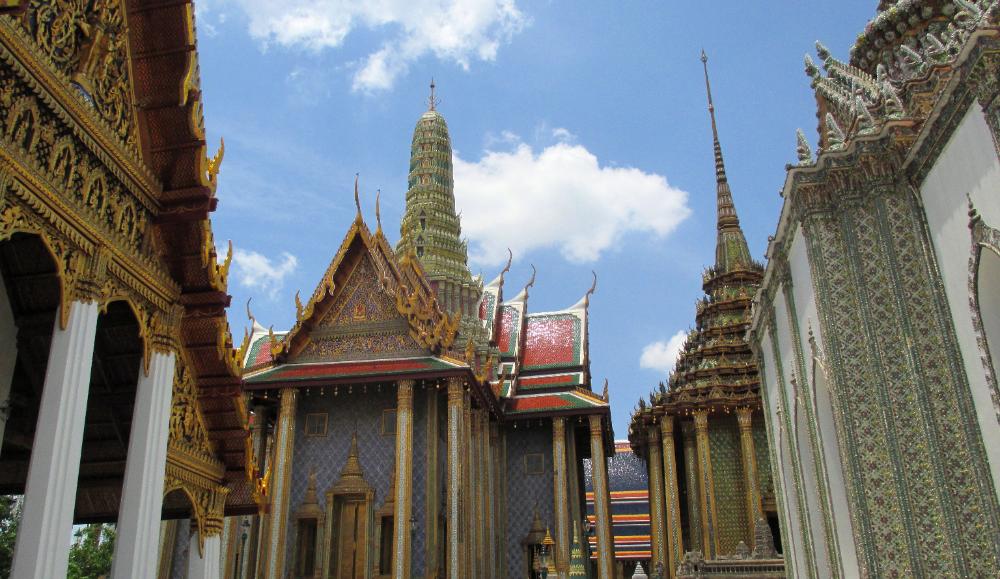

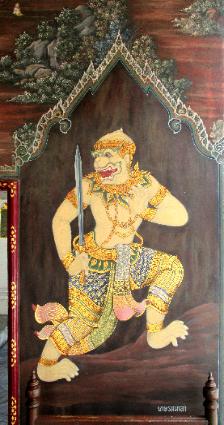
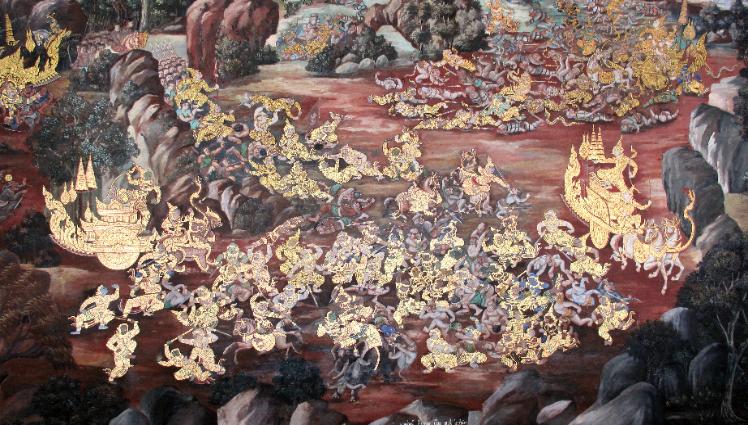
| Grand Palace -- Bangkok, Thailand |
| The palace is a riot of colors, shapes, and statues -- I could hardly put my camera down |
| The entrance is guarded by two huge warriors |
| ...And their ferocious foo dog! |
| No photos are allowed inside Wat Phra Kaew (the Temple of the Emerald Buddha), but you can try to take photos from just outside. These were the best I could manage of the sacred symbol of Thailand set in its elaborate altar. |
| Outside Wat Phra Kaew you can dip a lotus blossom in holy water and sprinkle it on the head to bring blessing and good fortune |
| Every surface of the outside of the temple is covered in flamboyant decoration and color |
| The huge golden bell tower (stupa) is Phra Siratana Chedi |
| Artists must have had the time of their lives decorating this place |
| One of my favorite corners of the palace complex |
| The tiled roofs are a study in primary colors: blue, yellow, red |
| These poor fellows seem to have the hardest task at the palace |
| This curious ostrich-human is fanciful to say the least |
| The jumble of images and styles is overwhelming at times -- but undeniably fun |
| Simply put, this place is a photographer's paradise |
| The palace grounds contain a large-scale model of Cambodia's Angkor Wat. Why? Because Siam ruled Cambodia for hundreds of years before the French colonized it. |
| Elegant architecture and colorful geometric details add to the beauty of this place |
| The skyline at the Grand Palace is quite different from anything you'd see in America |
| The ubosot (main shrine) of Wat Phra Kaew is perhaps the largest building in the complex |
| Rich murals decorate many of the walls of the palace |
| Some murals tell the story of the Ramakien, Thailand's national epic, which is derived from the Hindu Ramayana but with a Thai twist |
| The Grand Palace grounds are expansive: we wandered around happily for a good two hours at what is probably Bangkok's top tourist attraction |
| The final highlight of our visit was seeing Chakri Maha Prasat, nicknamed "the Westerner with a Thai hat" due to its mix of Western architecture with Thai-style roof |
| Royal Guards march outside Chakri Praha Masat (shown below) |
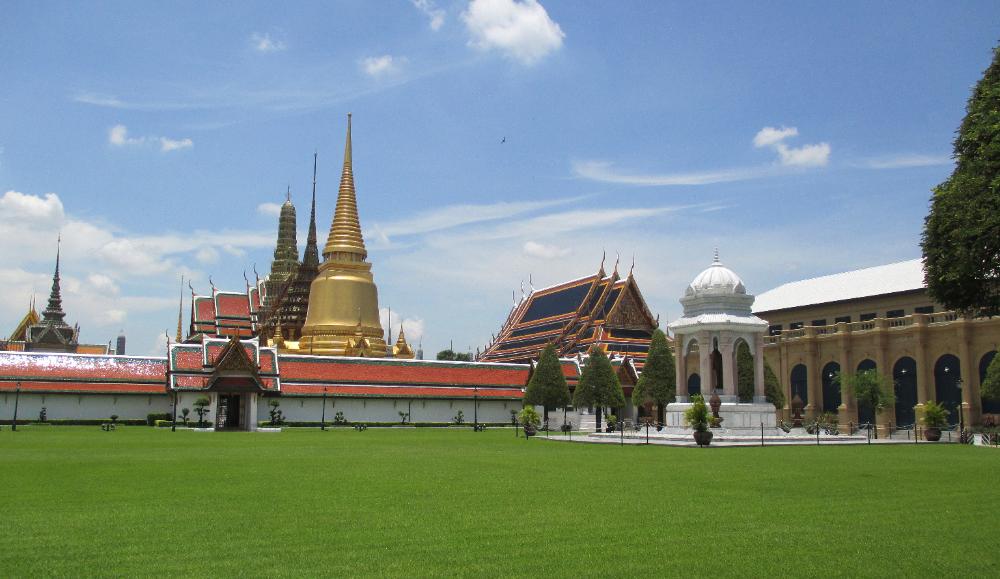
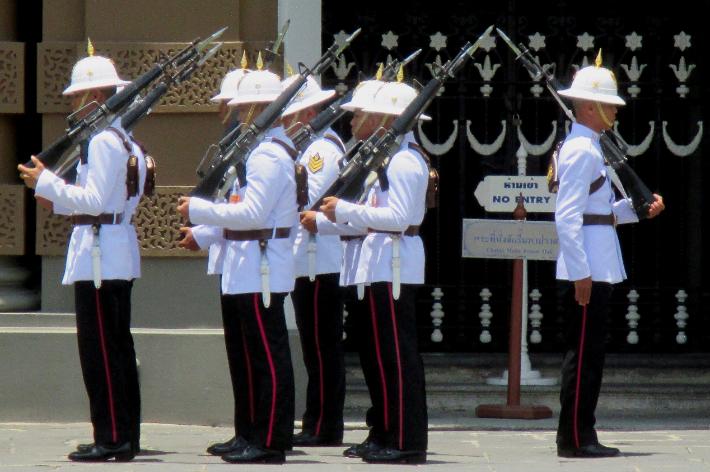
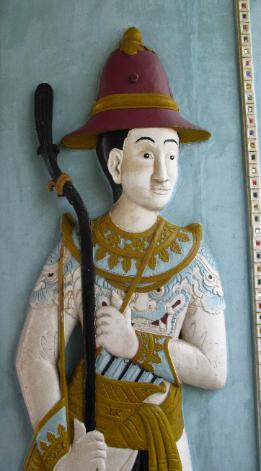
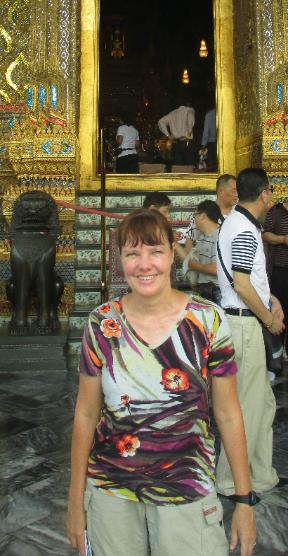
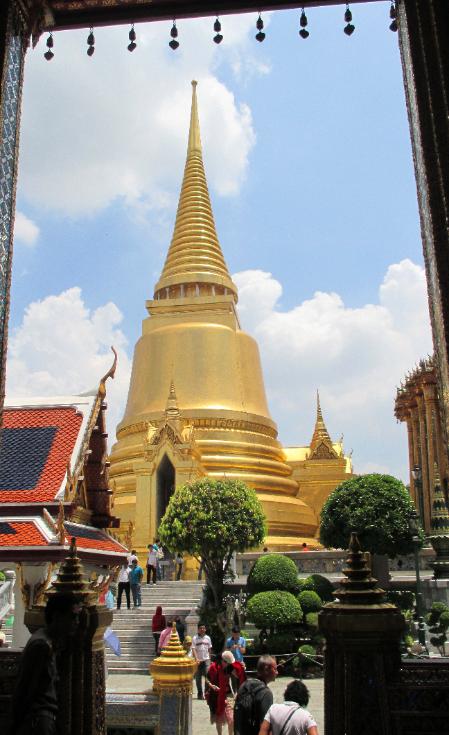
I wandered around the Grand Palace in a sort of
photographer's fugue state. There are so many
things to take pictures of here: curious statues
of ostrich-like humans, tall gargoyle guardians,
sparkling gold-and-blue tiled roofs, temples,
shrines, pavilions, bells, gardens, courtyards,
gilding and gold leaf everywhere -- a blissful
confection of images and colors for the eyes.
The palace is located in the heart of historic
Bangkok and is an easy walk from Tha Chang
pier on the Chao Phraya River. It has been the
official residence of the Kings of Siam and
Thailand since 1782. Nowadays it's mostly used
for official ceremonies -- and as a draw for
tourists of course. We paid a hefty fee to get in:
500 baht ($17) each. But while the price is high,
this place packs so much architectural glitz and
glamour into one space it's worth it.
Plus there's a second draw: this is the home of
the Emerald Buddha, Thailand’s most revered
icon. Wat Phra Kaew is located on the grounds
of the Grand Palace and is an attraction in its
own right. We removed our shoes and headed
within, sitting on polished tiles and drinking in
the rich atmosphere. Fine murals line the walls,
but front and center is the Emerald Buddha
itself, located high up on an elaborate gilded
altar. The icon's seasonal robes are changed
three times per year by the King -- a tradition
thought to bring good luck to the country. You'll
need binoculars to see it up close -- it's only 45
cm tall -- but it has quite the wild history. Carved
in India in 43 BC, it's said to have made its home
in India, Sri Lanka, Burma, Cambodia, and Laos
before finally coming to rest in Thailand.
photographer's fugue state. There are so many
things to take pictures of here: curious statues
of ostrich-like humans, tall gargoyle guardians,
sparkling gold-and-blue tiled roofs, temples,
shrines, pavilions, bells, gardens, courtyards,
gilding and gold leaf everywhere -- a blissful
confection of images and colors for the eyes.
The palace is located in the heart of historic
Bangkok and is an easy walk from Tha Chang
pier on the Chao Phraya River. It has been the
official residence of the Kings of Siam and
Thailand since 1782. Nowadays it's mostly used
for official ceremonies -- and as a draw for
tourists of course. We paid a hefty fee to get in:
500 baht ($17) each. But while the price is high,
this place packs so much architectural glitz and
glamour into one space it's worth it.
Plus there's a second draw: this is the home of
the Emerald Buddha, Thailand’s most revered
icon. Wat Phra Kaew is located on the grounds
of the Grand Palace and is an attraction in its
own right. We removed our shoes and headed
within, sitting on polished tiles and drinking in
the rich atmosphere. Fine murals line the walls,
but front and center is the Emerald Buddha
itself, located high up on an elaborate gilded
altar. The icon's seasonal robes are changed
three times per year by the King -- a tradition
thought to bring good luck to the country. You'll
need binoculars to see it up close -- it's only 45
cm tall -- but it has quite the wild history. Carved
in India in 43 BC, it's said to have made its home
in India, Sri Lanka, Burma, Cambodia, and Laos
before finally coming to rest in Thailand.
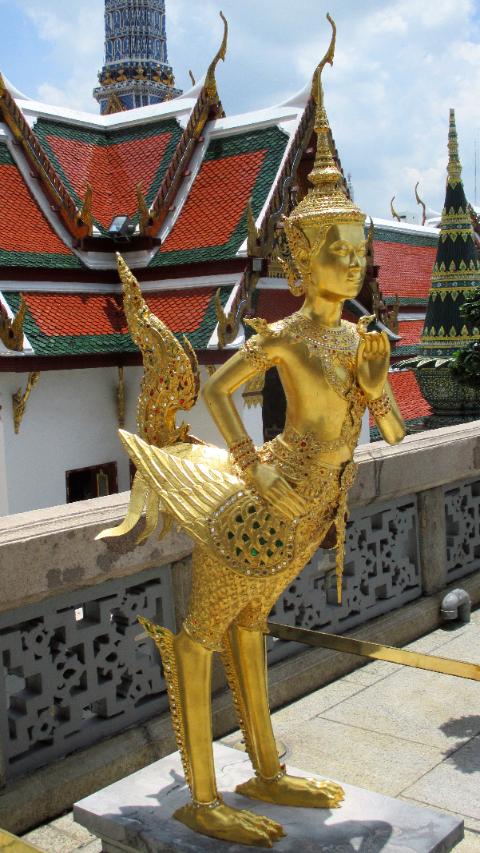
| The Grand Palace is a feast of colors and images for the senses |
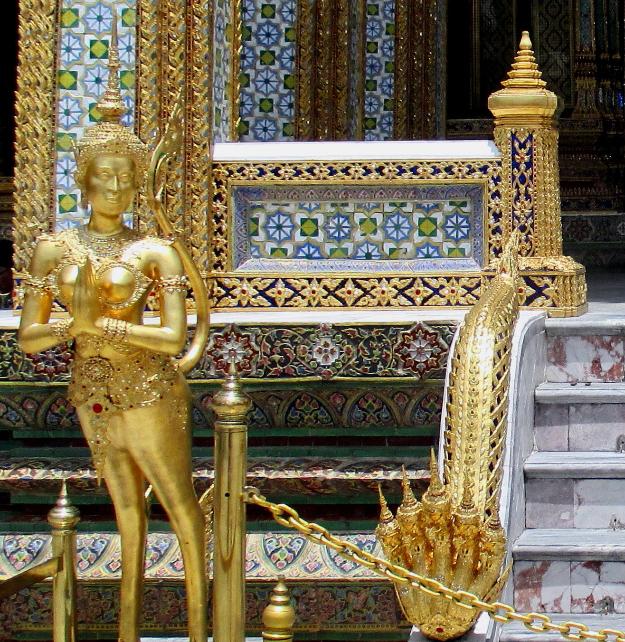
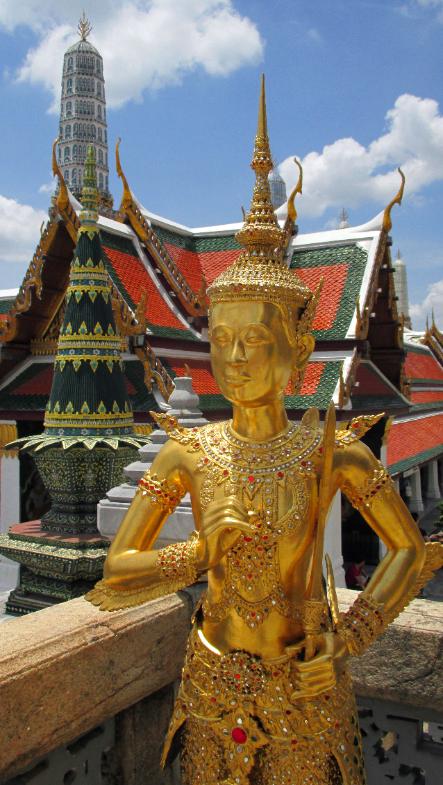
| And this guard looks quite stylish with his plaited beard and elaborate robe |
| Each temple window frames a different view |
| A Royal Guard wannabe? |